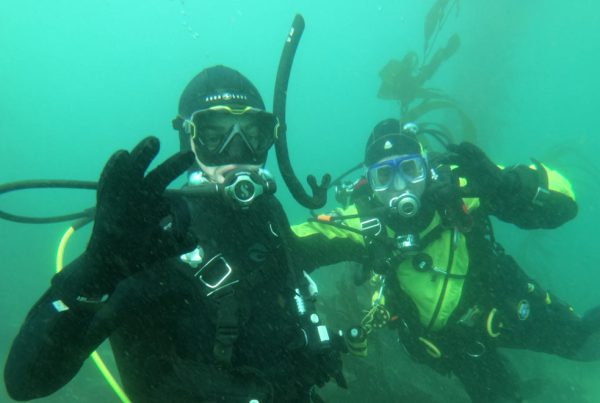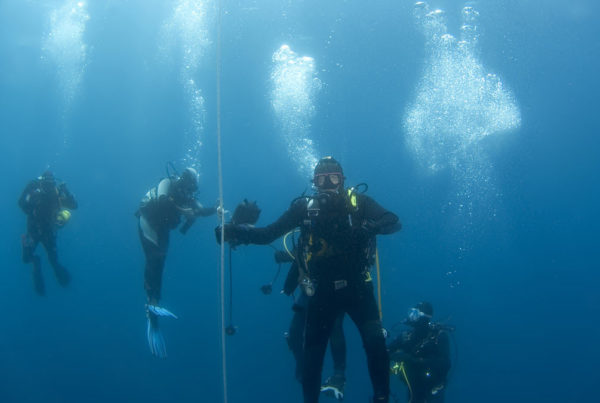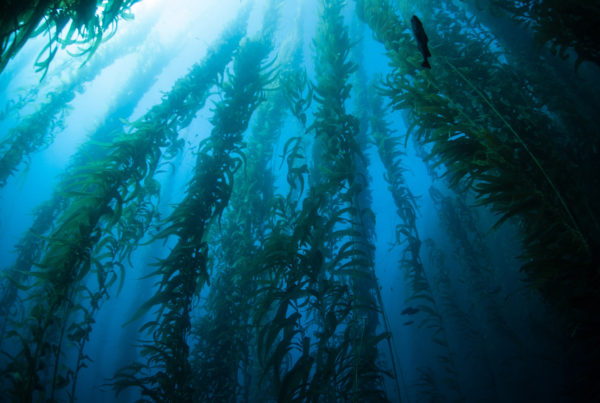Most active California divers also travel to exotic destinations one a twice or year to dip their fins into warm tropical waters.
Gearing up for tropical coral reef adventures can however be different than California diving, and we are talking about more than just a thick wetsuit or dry suit. Standard equipment for California divers is not always so standard in the tropics. Sometimes, it is simply not needed. Often it is even frowned upon. Below is look at some items of gear that you may need in some tropical situations, but not in California waters and visa versa.
Knife: A hog-slasher commando knife was once considered standard gear for the California diver. Now not so much. But a sharp knife of some kind, small or big, is still a required item for nearly all California diving. While kelp is not as dangerous as a lot of people make it out to be, a good knife makes short work of entanglements. Also, hook and line fishing enthusiasts seem quite prevalent on our reefs. Any place entanglements could be a problem so you need a cutting device, either a sharp knife or snips. Don’t forget to wear your knife on the inside of your calf or other tucked-in spot so that it does not snag on the kelp.
In tropical waters it is unlikely you’ll need a knife, but it depends on the situation. Some locations heavily discourage the wearing of a knife, even some prohibiting them.
Snorkel: Beach diving is popular in California and beach diving sometimes requires long surface swims. A snorkel is often the most comfortable way to kick in from those dives. But more importantly, a snorkel is a must for slogging through the kelp on the surface, if necessary. Should you surface on the wrong side of a kelp forest and have to make a surface swim back across the kelp, the “kelp crawl” is way to go. This requires pushing the kelp down in front of you in a face down position.
In tropical water it is less likely you will need a snorkel but it depends on the situation. In both locations, however, it is always fun to take a snorkel with you should the opportunity present itself to just casually snorkel in shallow waters.
A collapsible snorkel that fits in your BC pocket is one option. Ask about them at your local professional dive center.
Safety Sausage: A good idea for nearly all diving situations as not only can they be used for signaling a dive boat far off but can also be used for an open water safety stop or decompression stop. They can ward away unwanted boat traffic and even be used to signal for help on a beach dive. For as useful and important as these devices are, far too many divers do not carry them. Carry them both in tropical and California waters.
“Spare Air” or other Pony Bottle device: An independent redundant air source is a good idea in nearly all diving situations but not always a must. The guideline is simple: if you can safely escape to the surface without one, you may not need one. For some, this is as little as 20 feet deep, others, as much as 50 feet deep. If you are diving solo you should always have one. You also need to consider kelp forest canopies, wreck and cavern penetration, decompression requirements, and other overhead environments (specialty training required).
Airline travel with a pony bottle, however, can be difficult. Any scuba cylinder, large or small, must be completely empty and have the valve removed so that the inspection authorities can easily peer inside. Even then your small cylinder will be heavily scrutinized. And then there is the additional weight problem. If you are traveling via air, consider renting the device onsite if available.
Dive light: You only need a dive light if you are night diving or penetrating caverns or into wrecks (specialty training required) but dive lights almost always add to diving enjoyment. They are great for peering into dark holes and under ledges and bright lights are good for bring out the true colors of reef animals. Even on daylight dives, California or tropical waters, try to carry a small dive light you can fit into a BC pocket.
Computer: Dive computers have become such a standard that a lot of divers do not realize that they are not a must have. In your basic certification class you should have been taught how to use the dive tables. If you find yourself on a tight budget, or you want some time to research which computer is best for you, you may want to dive with the tables first. Dive the tables your first several dives anyway so that you become proficient. Of course, you will still need a depth gauge and timing device. Even if you don’t want to work the tables you can, however, rent a computer at a very reasonable fee. Try several types and brands and see what you prefer but understand each as each is different.
Gloves: This is a sticky one. I always carry gloves on every trip, tropical or California. But rarely do I wear them in warm waters simply because most resorts and tropical liveaboards forbid their use. Gloves in California are a must for the cold water. And because more divers tend to grab the reef because it is not coral, they are important for hand protection. And for the game hunters in California they are a must.
As a traveling diver, airline weight restrictions may have you thinking about every ounce of gear you travel with. California divers diving locally are not as restricted, but restricted or not, each piece of gear must be carefully considered and well maintained.









